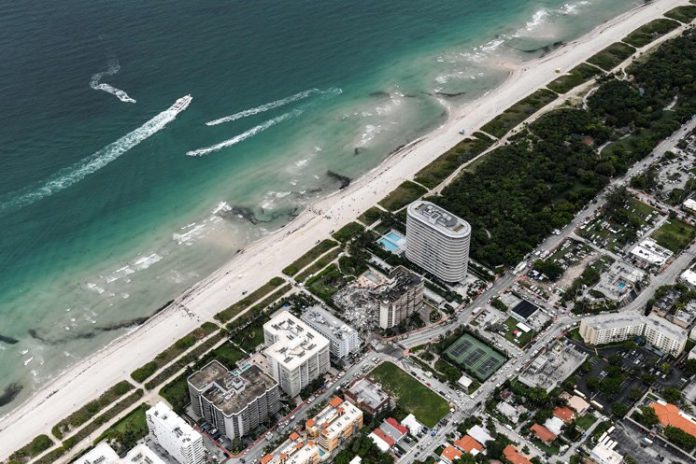After part of a massive hi-rise residential apartment building in Surfside, Florida, just north of Miami beach, came crashing down around 1am Thursday morning, rescue workers have been searching through the pile of rubble for survivors with the help of rescue dogs.
Governor de Santis called the scene “destruction” and said that Floridians were bracing themselves for bad news. Since 2am, two people, including a young boy, have been rescued from amid the rubble, according to Ray Jadallah, Miami-Dade Fire Rescue assistant fire chief at a news conference.
35 people have been rescued from the building. But 51 owners of apartments in the condominium had not yet been accounted for as of 10am Thursday morning, according to county officials. The cause of the collapse is as yet unknown.
It is also not clear whether the rest of the residential building that remains standing is stable. In light of these unknowns, 15 families who live there are being moved to hotels. A recent study of infrastructure conducted by a group of researchers in Colorado found that millions of homes in the US are in disaster-prone areas that are being affected by climate change.
“Every year, we lose billions of dollars [and] we lose lives to natural hazards,” said Virginia Iglesias, a researcher at the University of Colorado, Boulder, who is one of the authors of the study.
“Climate change has a lot to do with this because climate change is increasing the probability of extreme events. But at the same time, it also matters what is in harm’s way.” About 1.5 million buildings are in hot spots for two or more hazards, according to the study.
It references areas of the western U.S. that are extremely prone to both wildfire and earthquakes, and parts of the southern U.S. that, like Florida, are at high risk for floods, hurricanes, and tornadoes. The study raises questions about the zoning and permitting done by local authorities which are driven by a financial incentive to condense development and population in such zones to enhance tax revenues.
According to the study, “development in these areas is still growing more rapidly than the baseline rates for the nation, portending larger future losses even if the effects of climate change are not considered.
” Yet, many local authorities are not taking into account such risks, say the researchers. Iglesias said that she hopes the research will help policymakers and residents make more informed decisions about where to site new development and how to make buildings more resilient.
In the meantime, family members of the residents of the Surfside condominium known as Champlain Towers South are awaiting news of their loved ones.





